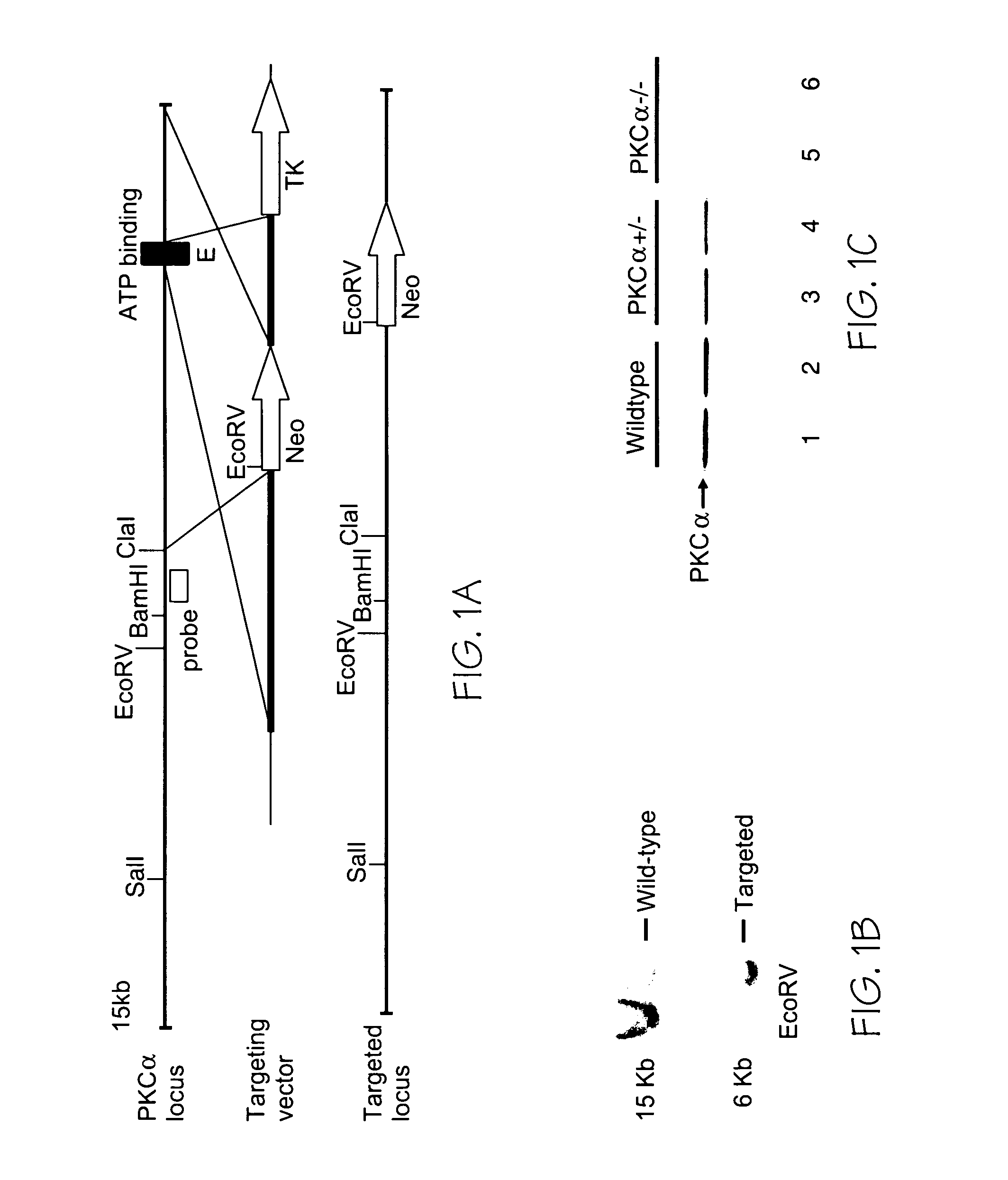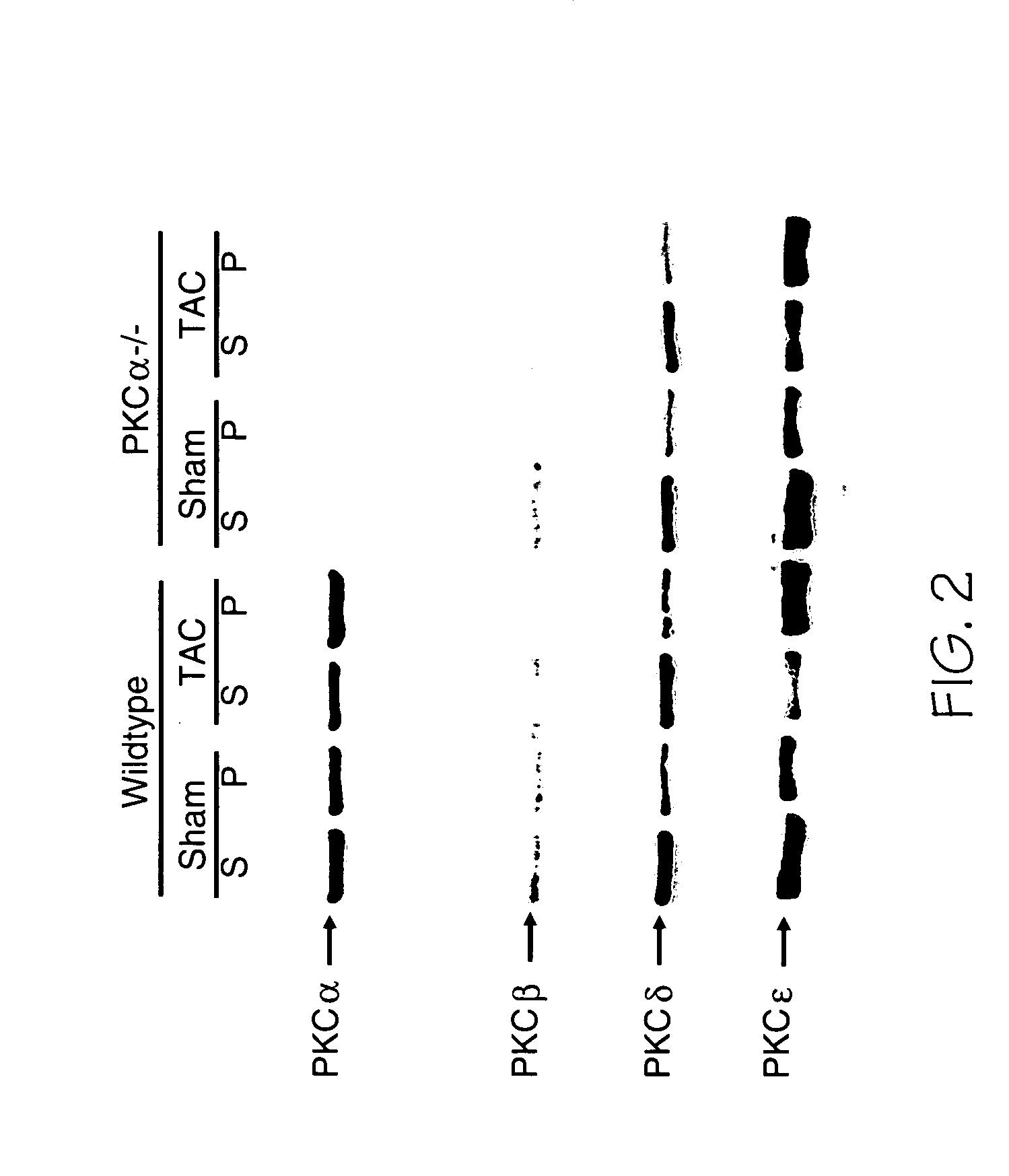Regulation of cardiac contractility and heart failure propensity
a cardiac contractility and heart failure technology, applied in the field of transgenic mice, can solve the problems of heart failure, difficult and unpredictable study of such diseases and conditions in genetically diverse humans, and achieve the effects of treating or preventing acute heart failure, increasing the cardiac contractility of the animal, and preventing cardiomyopathy
- Summary
- Abstract
- Description
- Claims
- Application Information
AI Technical Summary
Benefits of technology
Problems solved by technology
Method used
Image
Examples
example 1
Generation of Transgenic Mice
[0152] The PKCα gene was targeted for deletion by standard homologous recombination in embryonic stem cells, followed by production of chimeric mice, which were bred and passed the targeted allele into the germline. The exon encoding the ATP binding cassette in PKCα was deleted resulting in a null allele with regards to protein expression. For generation of PKCα overexpressing transgenic mice, a cDNA encoding PKCα was subcloned into the murine α-myosin heavy chain promoter-containing expression vector and injected into newly fertilized oocytes. The MLP, PP1c, and pressure-overload surgical model (TAC) were all described elsewhere (Arber et al. (1997) Cell 88:393-403; Carr et al. (2002) Mol. Cell. Biol. 22:4124-4135; and Liang et al. (2003) EMBO. J. 22:5079-5089). Males were exclusively used in all studies for consistency. All animal experiments were approved by the Institutional Animal Care and Use Committee.
example 2
Echocardiographic Analysis
[0153] Mice from all genotypes or treatment groups were anesthetized with isoflurane, and echocardiography was performed using a Hewlett Packard 5500 instrument with a 15-MHZ microprobe. Echocardiographic measurements were taken on M-mode in triplicate from four separate mice per group. The isolated ejecting mouse heart preparation used in the present study has been described in detail previously (Gulick et al. (1997) Circ. Res. 80:655-664), as was the close-chested working heart model employed here (Lorenz et al. (1997) Am. J. Physiol. 272:H1137-H 1146).
example 3
Histological Hypertrophic Marker Gene Analyses
[0154] Hearts were collected at the indicated times, fixed in 10% formalin containing PBS, and embedded in paraffin. Serial 5-μm heart sections from each group were analyzed. Samples were stained with hematoxylin and eosin or Masson's trichrome. Cardiac gene expression of hypertrophic molecular markers was assessed by RNA dot-blot analysis as described previously (Jones et al. (1996) J. Clin. Invest 98:1906-1917).
PUM
| Property | Measurement | Unit |
|---|---|---|
| resistance | aaaaa | aaaaa |
| pH | aaaaa | aaaaa |
| temperature | aaaaa | aaaaa |
Abstract
Description
Claims
Application Information
 Login to View More
Login to View More - R&D
- Intellectual Property
- Life Sciences
- Materials
- Tech Scout
- Unparalleled Data Quality
- Higher Quality Content
- 60% Fewer Hallucinations
Browse by: Latest US Patents, China's latest patents, Technical Efficacy Thesaurus, Application Domain, Technology Topic, Popular Technical Reports.
© 2025 PatSnap. All rights reserved.Legal|Privacy policy|Modern Slavery Act Transparency Statement|Sitemap|About US| Contact US: help@patsnap.com



